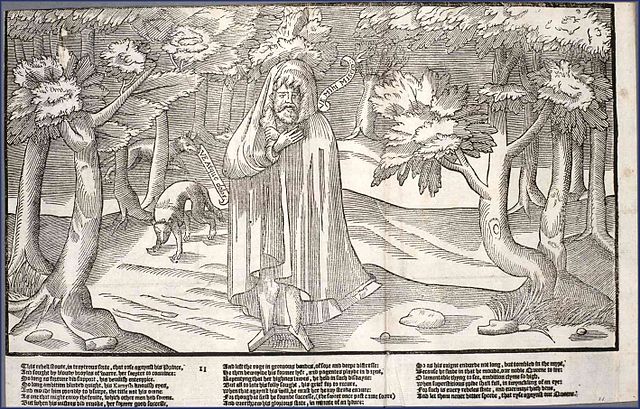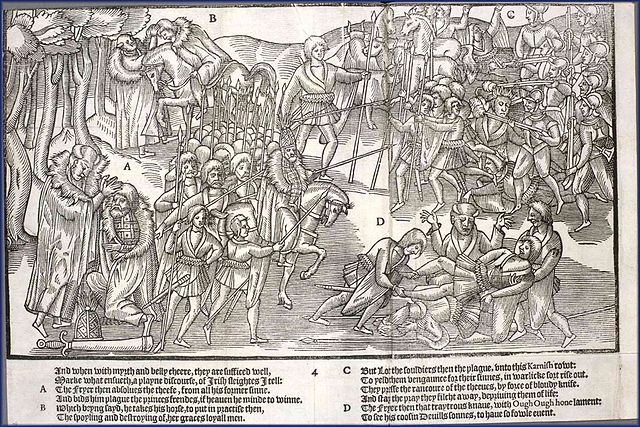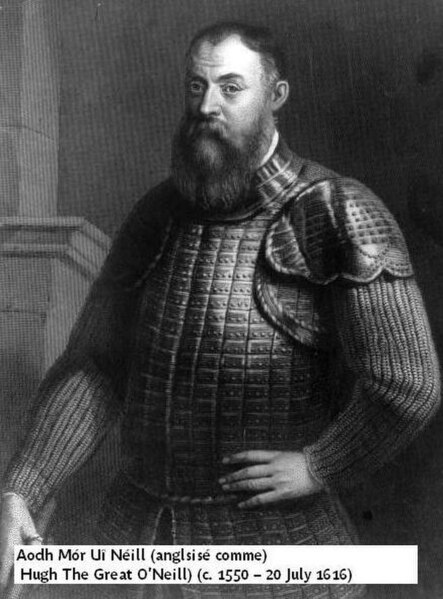Rory O'More, also known as Rory Oge O'More, was an Irish noble of the O'More clan. As Lord of Laois, he rebelled against the English Tudor forces.
Rory O'More
John Derricke's The Image of Irelande, with a Discoverie of Woodkarne, c. 1581. O'More is depicted in a forest with his hunting dog
Plantations in 16th- and 17th-century Ireland involved the confiscation of Irish-owned land by the English Crown and the colonisation of this land with settlers from Great Britain. The Crown saw the plantations as a means of controlling, anglicising and 'civilising' Gaelic Ireland. The main plantations took place from the 1550s to the 1620s, the biggest of which was the plantation of Ulster. The plantations led to the founding of many towns, massive demographic, cultural and economic changes, changes in land ownership and the landscape, and also to centuries of ethnic and sectarian conflict. They took place before and during the earliest English colonisation of the Americas, and a group known as the West Country Men were involved in both Irish and American colonization.
The Irish Gaelic chieftain receives the priest's blessing before departing to fight the English, who are shown in full armour.
Hugh O'Neill, who led the Irish rebellion against the English.
A portion of the city walls of Derry, originally built in 1613–1619 to defend the plantation settlement there.
Lismore Castle, County Waterford, acquired by Boyle and turned from a fortress into a stately home





